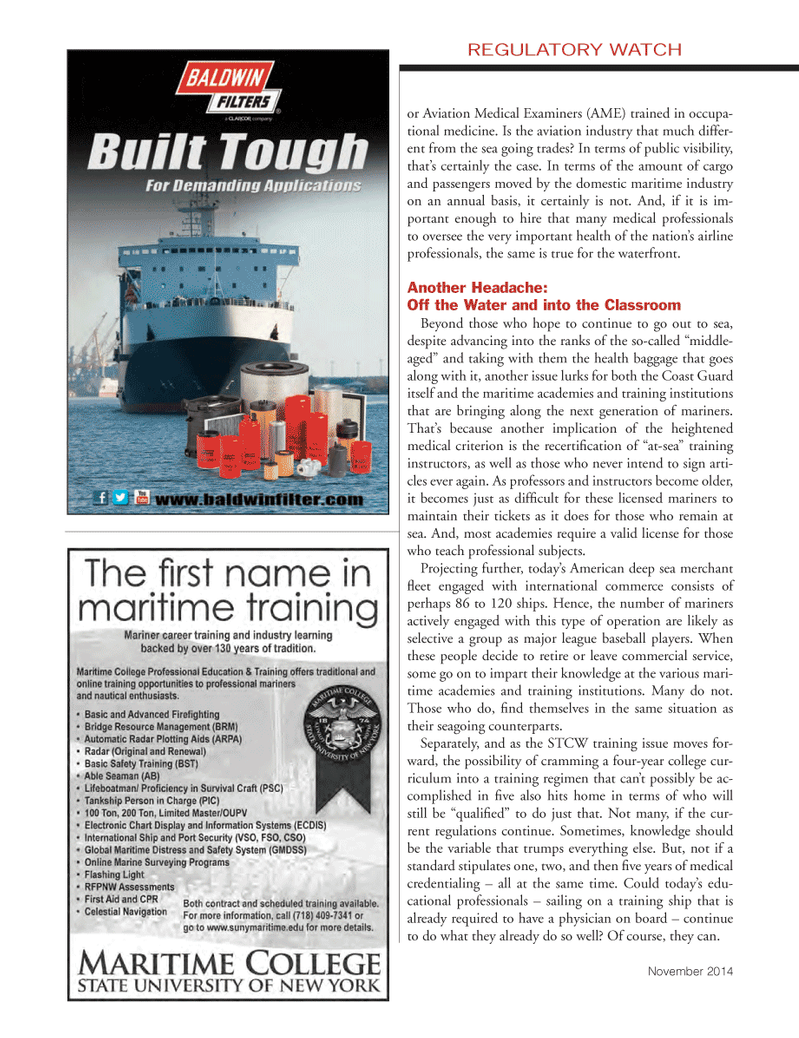
Page 4th Cover: of Marine News Magazine (November 2014)
Workboat Annual
Read this page in Pdf, Flash or Html5 edition of November 2014 Marine News Magazine
or Aviation Medical Examiners (AME) trained in occupa- tional medicine. Is the aviation industry that much differ- ent from the sea going trades? In terms of public visibility, that’s certainly the case. In terms of the amount of cargo and passengers moved by the domestic maritime industry on an annual basis, it certainly is not. And, if it is im- portant enough to hire that many medical professionals to oversee the very important health of the nation’s airline professionals, the same is true for the waterfront.
Another Headache:
Off the Water and into the Classroom
Beyond those who hope to continue to go out to sea, despite advancing into the ranks of the so-called “middle- aged” and taking with them the health baggage that goes along with it, another issue lurks for both the Coast Guard itself and the maritime academies and training institutions that are bringing along the next generation of mariners.
That’s because another implication of the heightened medical criterion is the recertifi cation of “at-sea” training instructors, as well as those who never intend to sign arti- cles ever again. As professors and instructors become older, it becomes just as diffi cult for these licensed mariners to maintain their tickets as it does for those who remain at sea. And, most academies require a valid license for those who teach professional subjects.
Projecting further, today’s American deep sea merchant fl eet engaged with international commerce consists of perhaps 86 to 120 ships. Hence, the number of mariners actively engaged with this type of operation are likely as selective a group as major league baseball players. When these people decide to retire or leave commercial service, some go on to impart their knowledge at the various mari- time academies and training institutions. Many do not.
Those who do, fi nd themselves in the same situation as their seagoing counterparts.
Separately, and as the STCW training issue moves for- ward, the possibility of cramming a four-year college cur- riculum into a training regimen that can’t possibly be ac- complished in fi ve also hits home in terms of who will still be “qualifi ed” to do just that. Not many, if the cur- rent regulations continue. Sometimes, knowledge should be the variable that trumps everything else. But, not if a standard stipulates one, two, and then fi ve years of medical credentialing – all at the same time. Could today’s edu- cational professionals – sailing on a training ship that is already required to have a physician on board – continue to do what they already do so well? Of course, they can.
REGULATORY WATCH
November 2014
MN Nov14 Layout 82-97.indd 84 10/22/2014 12:33:31 PM

 3rd Cover
3rd Cover

